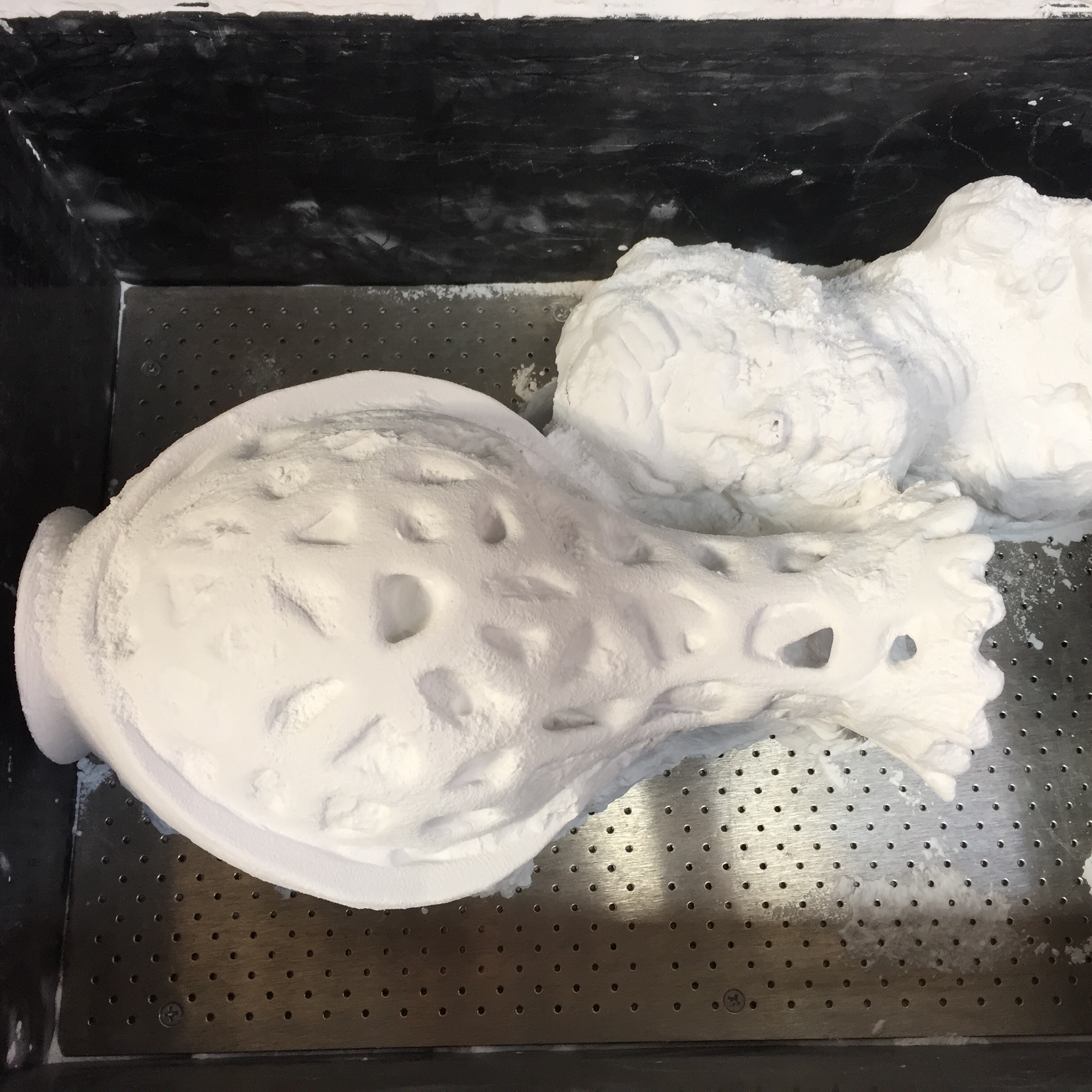25 - 27.09.15
After an exploratory trip to Stoke, Andy got the go-ahead from 3D Systems and the printer arrived at the old Spode factory the day before the opening. For me it meant a sharp learning curve, as I only had 2 days in which to learn to use it. But Forrest is an excellent teacher and had me involved from the outset. In the run up to the Festival we had invited a number of artists and designers to submit their CAD files for printing. Strict guidelines had to be adhered to, but a number of designs were accepted and prepared for printing. The first build comprised of 15 small, twin-walled beakers, used to test easily the excess powder could be removed and perform in the firings. The design incorporated rounded and squared edges, used to evaluate how the glaze responded.
Once a print is complete, the pieces can be gently excavated by de-powdering, using a vacuum hose and brushes. Ideally the pieces should be left in the printer for about 24 hours to allow them to dry and harden, making them less prone to damage. However, the Spode factory is quite cold [and likely to get colder], so we damaged a few of the beakers due to their fragility.
30.09.15
Andy and Forrest returned to Boston today, so it’s now up to me, with the assistance of Jo Ayres the studio manager, to keep the machine running.
The first batch of test beakers had been successfully fired and slipped, so they are ready for glaze testing.
I was greeted with a number of pieces in the de-powdering unit, some of which had broken, probably as a result of being removed too soon from the printer. Fortunately, my Spode-u-Like plate wasn’t one of them, though the support structure [used to prevent the shallow plate from slumping during the firing] was damaged.










